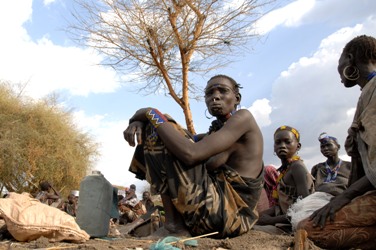Famine declared in parts of South Sudan
February 20, 2017 (JUBA) – War and a collapsing economy have left some 100,000 people starving in parts of South Sudan, government and three United Nations agencies said Monday.

The United Nations Food and Agriculture Organization (FAO), the United Nations Children’s Fund (UNICEF) and the World Food Programme (WFP) warned that urgent action is needed to prevent more people from dying of hunger.
“If sustained and adequate assistance is delivered urgently, the hunger situation can be improved in the coming months and further suffering mitigated,” partly reads a joint statement the agencies issued on Monday.
The total number of food insecure people is expected to rise to 5.5 million at the height of the lean season in July if nothing is done to curb the severity and spread of the food crisis.
According to the Integrated Food Security Phase Classification (IPC) update released today by the government, the three agencies and other humanitarian partners, 4.9 million people, over 40% of South Sudan’s population, are in need of urgent food, agriculture and nutrition assistance.
Unimpeded humanitarian access to everyone facing famine, or at risk of famine, is urgently needed to reverse the escalating catastrophe, the UN agencies urged. Further spread of famine can only be prevented if humanitarian assistance is scaled up and reaches the most vulnerable.
Famine, the agencies said, is currently affecting parts of Unity State in the northern-central part of the country. A formal famine declaration means people have already started dying of hunger. The situation is the worst hunger catastrophe since fighting erupted over three years ago.
“Famine has become a tragic reality in parts of South Sudan and our worst fears have been realised. Many families have exhausted every means they have to survive,” said FAO Representative in South Sudan, Serge Tissot.
“The people are predominantly farmers and war has disrupted agriculture. They’ve lost their livestock, even their farming tools. For months there has been a total reliance on whatever plants they can find and fish they can catch,” he added.
Malnutrition is a major public health emergency, exacerbated by the widespread fighting, displacement, poor access to health services and low coverage of sanitation facilities.
The IPC report estimates that 14 of the 23 assessed counties have global acute malnutrition at or above the emergency threshold of 15%, with some areas as high as 42%.
“More than one million children are currently estimated to be acutely malnourished across South Sudan; over a quarter of a million children are already severely malnourished. If we do not reach these children with urgent aid many of them will die,” said Jeremy Hopkins, UNICEF Representative in South Sudan.
“We urge all parties to allow humanitarian organizations unrestricted access to the affected populations, so we can assist the most vulnerable and prevent yet another humanitarian catastrophe,” he added.
U.N agencies and other partners have conducted massive relief operations since the conflict began, and intensified those efforts throughout 2016 to mitigate the worst effects of the humanitarian crisis. In Northern Bahr El Ghazal state, among others, the IPC assessment team found that humanitarian relief had lessened the risk of famine there.
In 2016, WFP said it reached a record 4 million people in war-ravaged South Sudan with food assistance, including cash assistance amounting to US$13.8 million, and more than 265,000 metric tons of food and nutrition supplies. This is reportedly the highest largest number of people assisted by WFP in South Sudan since independence from neighbouring Sudan in July 2011.
(ST)
